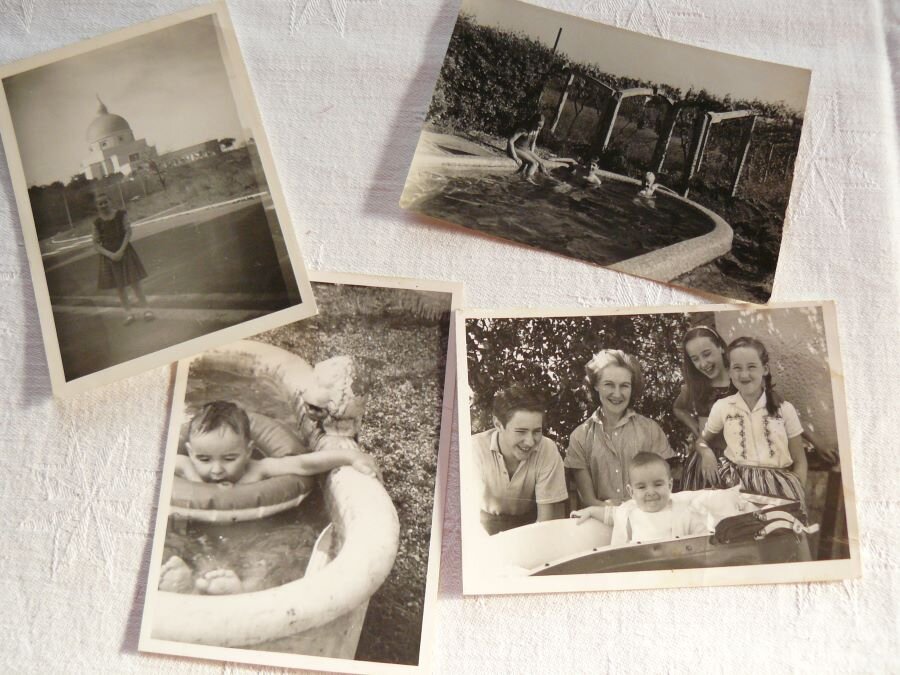My Connection to Italy: with author Angela Petch
/This week on Mammaprada we’re delighted to welcome Angela Petch. Angela is the author of several novels set in Tuscany. They are incredibly well researched and gathered from stories she has heard from family and friends in Italy. Each novel conjures up a wonderful image of the history of this province in times gone by.
Angela lives between the UK and the beautiful Italian Apennines. Her story and connection to Italy is just as moving as her novels.
Her fourth book, The Tuscan House, will be released on April 7th. You can pre-order your copy here.
Angela, how did your connection with Italy begin?
My love affair with Italy was born at the age of seven when I moved with my family to Rome where we lived for six years. Children are quick to absorb and this is how Italy got under my skin.
My parents sent us to St George’s, an international school in the centre of Rome, but they found a house for us on the outskirts. And we quickly picked up the language by playing with Italian children and shopping at local markets. In our garden, surrounded by vineyards and peach groves, were ancient Roman statues. Very different from our Edwardian house in suburban London.
I fell in love with Italy immediately. Every Sunday our father would get out his old Baedecker guidebook that he had used in immediate post-war Italy and take us somewhere new: Hadrian’s Villa, the Tivoli Gardens, Saint Benedict’s monastery, perched impossibly on the Subiaco mountainside, Ostia Antica and so on…
Italy is such a beautiful country with its mountains, lakes and breath-taking coastline. I think the food is the best in the world and the people are so hospitable. I always say that if I were born again, I’d choose to come back Italian.
Early pictures of Rome.
Early pictures of Rome.
My love affair continued when we had to return to England because of my younger brother’s tragic death. Paul was born in Rome and could have chosen Italian nationality if he had survived. He drowned in our swimming pool and my parents were too distraught to remain. He is buried in Rome in a little cemetery near the Pyramid. It used to be called il cimitero degli inglesi but is now il cimitero accatolico (even though Paulie was baptised as a Roman Catholic in St Peter’s basilica).
I passed GCE (in those days) Italian by studying on my own and went on to read Italian at university. In my third year abroad, I was engaged to a handsome Florentine but I quickly realised it was Italy I had fallen for, and not his black Alfa Romeo Spyder and his drop-dead-gorgeous looks. (Italians are so beautiful).
Having given up on men (!) I then met the one I am still with. Post-university, I worked for a Dutch construction company in wonderful Sicily and there he was, in the office next to me: my half-Italian, half-English hero. Maurice’s mother is Italian: a war bride who fell for an English army captain in 1944. I have to say that our relationship is an extremely happy compromise – we both adore Italy, but having been brought up predominantly in England, there are certain aspects about Italy (chiefly the bureaucracy) that annoy us. Sicily was an enchanting place to court. We spent our weekends touring in Maurice’s red Alfa Romeo Spyder (it’s the man, not the car… honestly!) One of our favourite destinations was Pantalica. Now it is a world heritage site, a Neolithic burial place, but in the mid-70s, nobody visited, save for shepherds grazing their sheep.
Life in Sicily.
Life in Sicily.
Sicily was full of special surprises. One day in Sicily we came across a group of men preparing their grapes for fermentation in the old-fashioned way – treading them barefoot.
We married in beautiful Urbino.
A very simple, informal wedding in a mediaeval church at Castel Cavallino that was opened up specially for us. An Italian/British affair, with a tiered wedding-cake that my mother had baked and brought over from England and traditional cappelletti for our main course. We didn’t have an official photographer and my dress was made from material I’d bought in Palermo and made up by a local dressmaker.
Wind forwards forty-four years and we are still in love with each other and Italy. Now we are retired, we live half the year in Tuscany where we bought a ruined watermill over twenty years ago.
In our corner of Tuscany, in the Val Marecchia valley, there are still bargains to be found. It is our corner of paradise and we love walking in the Apennines and have many local friends. Our three grown-up children come here to chill with our grandchildren and we have decided to pass the mill on to them. They have Italian blood in them after all.
Il Mulino is situated along the Gothic Line, built by the Germans in WW2, using a combination of man-made structures and the natural contours of the mountains as a defensive barrier to stop the allies from moving northwards. We have many elderly friends who have shared their accounts of that time with me.
Determined that these voices should not be forgotten, I have been inspired to write and my fourth Tuscan historical novel will be published on April 7th by Bookouture.
To PRE-ORDER your copy of Angela’s latest book The Tuscan House click HERE.
To order any of Angela’s previously published novels check out each title below.




































